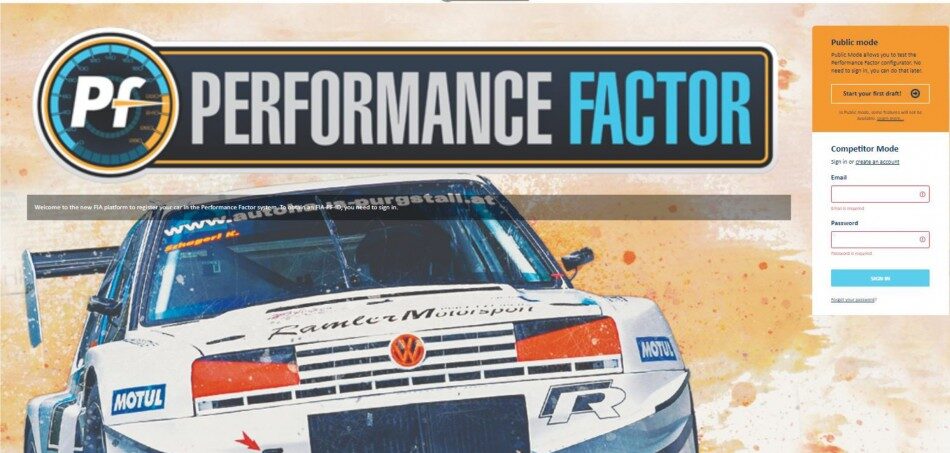The FIA recently held a seminar to provide an update and refresher on its Pf (Performance Factor) initiative, used to determine the performance of car and thus the racing class in which it should compete. According to the organization, nearly 100 participants attended with 21 ASNs represented.
The Performance Factor is a newly developed method that combines the easily measurable technical characteristics of cars to give them a so-called ‘Pf’ value, in order to determine the group in which they will race. For the time being, the method is only applicable to so-called ‘closed’ cars (mainly touring cars and GTs), but the FIA plans to extend its use to so-called Competition cars (prototypes and single-seaters) from 2023.
The formula used to generate a Pf value is an equation that takes into account a car’s racing weight (driver on board) and a combination of engine, transmission, aerodynamic and chassis parameters. A calculator is openly available to calculate a car’s Pf at www.fiaperformancefactor.com, which is free to access.
Depending on the value they obtain, the cars are divided into one of five groups, with Group 1 bringing together the best performers. The FIA asserts that the relative technical freedom that this method offers is perfect for competitors, as they can develop their cars as they wish, according to their budget, but also their ingenuity, without necessarily having to scrupulously follow the specifications described on a homologation form or without having to choose the latest models of car.
In Hill Climb, for example, the bulk of the field has always been made up of cars that are going through a second career. The Pf therefore allows competitors to adapt and develop their cars to the specificities of hill climbing. Beyond the FIA European Championship and FIA International Cup and FIA Hill Climb Masters, various ASN National Championships have already adopted the Pf (Poland, Czech Republic, Slovakia, Slovenia, Belgium, Spain, Lebanon and Jordan) and the circle will widen further in the coming years (notably with Austria and Croatia, as well as Germany, albeit on an experimental basis, in 2022).
The FIA noted that the seminar was an opportunity to both recall the fundamentals of the concept, and then to comment on the few changes made to the regulations and to the formula that leads to the delivery of the Pf value for each car. These changes have been made in the light of experience gained throughout the first year of official deployment in the FIA European Hill Climb Championship. Although more of an adjustment than a major change, these updates will require drivers who have already obtained a Pf technical sheet for their car prior to 2022 to have a new one generated. This will be characterized by a Y3 code associated with the PF identification number (ID-Pf).
The main amendments include, but are not limited to, clarification of the fenders, new guidance on the positioning of catalytic converters, and additional details or items to be reported when entering data on the website regarding exhaust type, turbocharger specifications and bodywork materials. Some measurement tolerances have also been revised.
FIA Hill Climb Commission president Dusan Koblisek, who opened the seminar, said, “The Performance Factor has proven itself over the last few months, both in the FIA European Championship and in various national championships, including that of my own ASN, Slovakia. Gordon Forbes and the technical department have done a remarkable job, supported by the Hill Climb Department and the Commission; making a complicated technical matter simple for such a wide range of cars as we encounter in Hill Climb racing was not an easy task.
“To have 21 ASNs at our webinar around this concept is testament to the interest in Pf for grassroots disciplines and I hope to see it adopted in many more regional, national and zone competitions in the future. This success with Category 1 cars encourages us even more to continue to develop Pf for Category 2 cars from 2023.”



